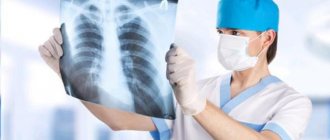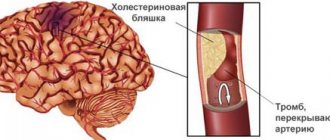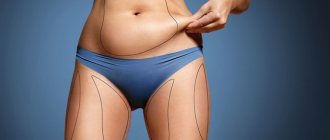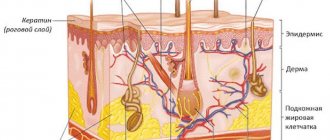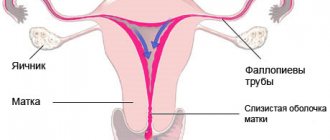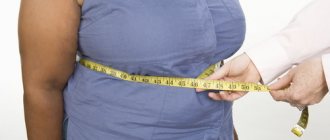About five percent of the world's population experiences panic attacks. Usually these are young people between the ages of twenty and thirty. Moreover, women are more susceptible to the disease. Panic is a normal reaction of the body to stress, but what are the reasons for its appearance, since there seem to be none?
A panic attack causes a powerful release of adrenaline, a hormone that involves preparing the body for an extreme situation and reacting to it, such as flight or fight. Breathing and heart rate increase, hyperventilation of the lungs occurs, which leads to dizziness, numbness and tingling of the legs and arms.
This is how the body usually reacts to sudden danger, this is normal. Thus, a panic attack is a malfunction of the body that causes the “emergency mode” to turn on, although this is not necessary.
More about panic attacks
Panic attacks are a sharp increase in anxiety and fears that are generated by an internal state and are not related to the current situation. A typical form of panic fear is accompanied by various vegetative-vascular and motor manifestations, such as:
- pronounced feeling of anxiety;
- fear for your health and life;
- cardiopalmus;
- increased sweating;
- sudden changes in blood pressure;
- trembling in the body;
- lump in throat;
- feeling of lack of air;
- abdominal pain and gastric disorders.
Panic attacks very rarely (about 1%) are a sign of serious diseases, such as heart defects, pheochromocytoma, oncology, etc., in the vast majority of cases they are associated with the psycho-emotional sphere and the autonomic nervous system. It is through the autonomic nervous system that all the mechanisms of panic attacks are realized.
Photo on Unsplash
An atypical form of a panic attack, the so-called “panic without panic,” can be manifested by temporary loss of hearing, voice, vision (a veil before the eyes), a person’s sense of taste and smell disappears, and motor skills are turned off. Such symptoms are usually observed in serious procedural mental disorders.
Mechanisms of panic symptoms
At the present stage, there are many hypotheses about the mechanisms of panic attacks, but they all boil down to disruptions in the processes underlying the reaction to stress.
Theories for panic cases:
- genetic theory;
Based on the idea that hereditary factors play a role in the risk of panic attack symptoms. The genes D4S413 and D9S271 are responsible for this.
- receptor theory;
The presence of a certain variant of the serotonin transporter protein (5HT LPR) leads to vulnerability to stress and correlates with the volume of brain gray matter in the amygdala and anterior cingulate gyrus;
- theory of human personality characteristics;
Symptoms of panic occur more often in people who have the following personality traits:
- Hypochondriacity;
- Demonstrativeness;
- I crave recognition;
- Great need to attract attention.
- psychoanalytic theory;
Its founder was Sigmund Freud. A person has natural needs for sex, freedom, aggression, if something affects his interests. Suppression of desires and interests under the pressure of family and social taboos leads to tension and internal conflict, which can develop into a panic attack. If strong experiences occur frequently, then a person may experience fear and a feeling of helplessness, which also provokes symptoms of panic.
- cognitive theory;
It consists of an incorrect interpretation of bodily sensations. Negative thinking contributes to incorrect internal experience, increased fear, which does not correspond to real dangers;
- social theory;
Modern life in a metropolis, pressure, stress, the need to conform to some status cause symptoms of panic not only in adults, but also in children and adolescents. Passing an exam, performing in competitions, fear of punishment, sexual violence cause symptoms of panic attacks;
- behavioral theory;
According to it, any external threatening event can take hold reflexively. For example, seeing a traffic accident causes your heart rate to increase and anxiety to arise. A repeated similar situation can again create an attack of anxiety and an acceleration of the pulse. In the future, a panic attack occurs without external causes;
- catecholamine theory;
Depending on the type of stress, the human body reacts with the release of adrenaline, a substance secreted by the adrenal cortex. It increases heart rate, increases blood pressure, and causes anxiety and fear.
Signs of a panic attack
It's surprising that not everyone who suffers from panic attacks knows what it is. It often happens that a panic attack is mistaken for some kind of heart disease, because they have a number of similar symptoms.
A vegetative crisis (an alternative name for a panic attack) can begin with increased heart rate, chest pain, and a feeling of shortness of breath. Patients attempt to relieve symptoms with the help of heart medications, but in this case they will not have the expected effect.
Photo on Unsplash
Other signs of a crisis include trembling hands, dizziness, excessive sweating, chills, a feeling of unreality of what is happening, impending loss of consciousness, inexplicable uncontrollable fear. At the same time, the presence of fear is not at all necessary: at the moment of an attack there may not be a panic attack, but instead, sadness, tearfulness or aggression are felt.
The duration of a panic attack can vary. The average duration is from 15 minutes to half an hour. Frequency of attacks: from several episodes a day to a couple of times a month. In principle, this is not a dangerous phenomenon, but there is a risk that panic attacks can have a bad effect on the psychological state, which will only increase their number.
Causes of panic attacks and risk factors
Panic attacks can be caused by any illness or experience. Most often they occur in people whose lives include at least one of the following factors:
- lack of physical activity;
- caffeine abuse;
- bad habits;
- suppression of emotions within oneself;
- lack of proper sleep and rest.
The tendency to panic attacks develops under conditions of an accelerated pace of life and chronic stress. Sometimes the condition develops against the background of mental disorders, but can also accompany coronary heart disease, mitral valve prolapse, thyrotoxicosis, depression, post-traumatic disorder, obsessive-compulsive disorder and other diseases.
Change habits
As we have already said, the main cause of panic attacks is severe stress and overexertion. Therefore, first you need to radically reconsider your regime: perhaps you live at such a frantic pace that you simply don’t notice it anymore. Meanwhile, the body sends you signals that you should not ignore.
- If possible, avoid smoking and alcohol, limit the consumption of coffee and other caffeine-containing drinks (strong tea, cola, etc.). It is better to replace them with natural leaf tea with chamomile, mint, and St. John's wort.
- Healthy eating. Abuse of fatty, sweet and salty foods, carcinogens and fast food is your worst enemy, as it puts increased stress on all systems and takes away precious strength from the body. At the same time, vital nutrients are in short supply. The body does not have enough energy to cope with the load. Eat a balanced diet, try to eat more fresh vegetables (especially seasonal ones), nuts, fish and chicken fillets. This will help compensate for the lack of calcium, vitamins, and omega-3 acids.
- Correct schedule. Adjust your daily routine, especially your sleep pattern. You need to fall asleep and wake up at the same time, and sleep for at least 7–8 hours. If at first you have difficulty falling asleep earlier, you can take a course of mild sedatives.
- Cold and hot shower. An excellent tonic that not only invigorates, but also strengthens the immune system. Of course, this is not a panacea for panic attacks, but in combination it will help you stabilize your nervous system.
General advice does not contain any discoveries: rest more often (including during the day), spend time in the fresh air, play sports or yoga. But this is precisely what has the most noticeable effect.
Stages of panic attacks
There are three stages of a panic attack:
- initial – warning signs of a panic attack appear. This may be some anxiety, uncertainty, heaviness in the head, inexplicable discomfort;
- expanded - a feeling of anxiety and fear appears, which steadily increases. It is at this stage that the main symptoms affecting the cardiovascular and respiratory systems occur. When anxiety and fear turn into panic, a person can no longer control himself;
- final - a feeling of lethargy, fatigue and weakness appears.
Foreplay can last up to half an hour, this time is quite enough to provide assistance and get rid of a panic attack. Panic, when a person is in a state of derealization, lasts on average about 30-40 minutes, maximum an hour. After a panic attack ends, it sometimes takes a day or more to fully recover and get rid of the consequences.
Photo by Max Nelson on Unsplash
Most often, panic attacks occur in the evening and at night, which can cause chronic insomnia, which in turn is a risk factor for the development of a panic state.
Types of PA
There are two main categories of panic attacks: expected (occur in a certain situation, the patient can predict their occurrence) and sudden, causeless. Some experts identify another, intermediate category - situationally predisposed attacks, when in a certain situation or under certain conditions PA does not always occur.
In addition, panic attacks are divided into several types with a different set of characteristic symptoms:
- Vegetative symptoms are accompanied by rapid pulse, increased heart rate, profuse sweating, dizziness, chills and trembling.
- Hyperventilation PA, which is characterized by shortness of breath, rapid shallow breathing, dizziness, and muscle pain.
- Conversion panic attacks are manifested by temporary loss of voice, discomfort in the heart and left side of the chest, and can lead to pre-fainting. This type of PA is not accompanied by fear of death and anxiety.
- Phobic ones are manifested by a feeling of horror in a specific situation, for example, in a confined space or in a crowd of people. There is a feeling of lack of air, dizziness, an irresistible desire to run away or hide.
- Senestopathic PAs cause a feeling of numbness in the arms and legs, a feeling of “pins and needles” throughout the body.
- Affective. There is a sharp change in mood, depressive disorders (fatigue, melancholy, feeling of exhaustion, etc.) predominate.
- Depersonalization-derealization PA is accompanied by a feeling of unreality of oneself and/or the surrounding world.
PA in women
In the fairer sex, panic attacks occur 3-4 times more often than in men. This is due to more pronounced emotionality and regular hormonal changes in a woman’s body: the normal menstrual cycle and its irregularities, pregnancy, lactation, menopause.
body restructuring during puberty The hormonal background is still unstable, which provokes outbursts of aggression or depression. Middle-aged women suffering from panic attacks are often diagnosed with VSD by a therapist.
At the age of 40-45 years, women may confuse panic attacks with symptoms of menopause (irritability, hot flashes, facial flushing, increased sweating, disrupted night sleep and daytime sleepiness). With PA there are no menstrual irregularities. It is by this symptom that early menopause can be distinguished from panic attacks.
After 50 years, women experience real menopause. The production of estrogen in the body decreases, the amount of progesterone changes (it affects the condition of the body as a whole). Organs and systems adapt to the new hormonal levels, which is why they experience disruptions. For example: increased blood pressure, problems with the thyroid gland and gastrointestinal tract, thrombosis of blood vessels in the extremities. All these somatic diseases are a predisposing factor to the occurrence of panic attacks.
PA in men
Although panic attacks are more common in women, the first mention of them as a disease is found in records of the American Civil War. It was among the soldiers that “heart neurosis” occurred.
In the modern world, a man constantly experiences stress related to work, finances, providing his family with everything necessary, communications with colleagues, pressure from superiors, business problems, and so on. His psyche reacts to stress naturally - he needs to defend himself and be aggressive. But the manifestation of aggression will be perceived negatively by society, so men prefer to suppress emotions within themselves.
Accumulated negative emotions at a certain moment lead to breakdowns, which are manifested by alcoholism, an outburst of aggression towards weaker people (wife, children) or attacks of panic attacks.
Panic attacks in children and adolescents
As we wrote above, one of the main causes of panic attacks is childhood psychological trauma. Often a child reacts very emotionally to events that seem insignificant to an adult:
- change of children's team (transfer from one kindergarten to another, transition from kindergarten to school, change of class or school);
- parents’ failure to accept the child’s independence, overprotection;
- moving;
Adults devalue the child’s feelings. For example, when parents say: “Is this a problem? When you grow up, you will know what real problems are.” The baby’s trust in the world disappears, there is no sense of security, self-esteem falls, which is why anxiety increases.
Parents should be attentive to their child's complaints.
It is not always possible for a child to adequately and clearly explain what is happening to him. Children may have several signs of a panic attack that they cannot interpret:
- confusion of thoughts, the baby begins to speak in fragments of phrases or confuse words;
- loss of control over emotions is manifested by seemingly unreasonable aggression or decreased mood and depressed state;
- the child breathes heavily, sometimes cyanosis of the lips appears (change in color of the skin to blue, bluish);
- the pulse becomes frequent, the pulsation of the carotid arteries is visible to the naked eye;
- There may be nausea and diarrhea;
- the baby trembles, chills appear;
- due to profuse sweating, clothes become wet;
- the mucous membranes of the mouth dry out, the child asks for a drink;
- the skin becomes pale;
- The child is afraid of being abandoned by his parents, dying himself, or witnessing the death of a loved one.
Night is a time for children to panic. Children are afraid of the dark, of monsters living under the bed or in the closet. For all of them, this is a real threat. Before going to bed, the baby begins to analyze the events that happened to him during the day. If some of them were strongly colored by negative emotions, then the child begins to re-experience them, which provokes a panic attack.
Many parents teach their children to suppress emotions, telling them that showing emotions in public is something shameful. The child grows up, and in adolescence, accumulated emotions begin to manifest themselves in the form of panic attacks or attacks of aggression, quarrels and fights with peers, causing harm to one’s body (even suicide).
Panic attack at night
It's not just children who suffer from nighttime panic attacks. The exact reasons for their occurrence still remain unknown, but doctors have several assumptions:
- Episodes of sleep apnea cause PA. When the body does not receive oxygen for 30-180 seconds, it perceives this condition as a threat to life. In a dream, a feeling of anxiety and fear appears, due to which a person wakes up with an incipient panic attack.
- Lack or excess of certain biologically active substances (norepinephrine, adrenaline, gamma-aminobutyric acid). They regulate the processes of sleep and wakefulness in the body. Insomnia can be both a symptom and a cause of panic attacks.
- Strong emotional shocks experienced during the day, which a person begins to focus on before going to bed. As a result, the body re-experiences stress, the emotion of fear is no longer suppressed and can cause an attack of PA.
Frequent panic attacks during sleep or before falling asleep increase a person’s anxiety, he begins to be afraid to sleep, fatigue increases, the emotional background becomes even more unstable and the vicious circle closes.
Panic attacks during or after coronavirus
Mass panic is considered the most terrible type of panic. Deadly diseases have always scared people. In the 21st century, the speed of information dissemination is many times higher than before, and its volume is enormous. Just a few days after the appearance of the coronavirus, all the world media spoke about the danger of this disease and the lack of etiotropic (aimed at destroying the COVID-19 virus) therapy.
The appearance of any symptoms of ARVI caused great concern among people. And the fact of the presence of coronavirus in the body provoked panic, regardless of the presence of symptoms of the disease. In an interview for lenta.ru, general practitioner, candidate of medical sciences Andrey Petrovich Kondrakhin said that most people who have recovered from coronavirus experience panic attacks.
With a mild course of the disease, patients are isolated at home or in a hospital ward, which is why hypochondria and already existing phobias of confined space, loneliness and death gain strength. Increased anxiety provokes panic attacks.
The undulating course of coronavirus infection, when episodes of improved well-being are followed by deterioration, also becomes a cause for panic. The person gets better, it seems that the disease is receding, but suddenly the state of health worsens. The psyche cannot cope with emotional overloads of “joy/despair,” and a depressive or anxious personality disorder develops—another predisposing factor for PA.
A severe course of coronavirus infection is accompanied by impaired respiratory function of the lungs, hypoxia of the body, general intoxication, rapid pulse, and sometimes infectious-toxic shock. The patient's acid-base composition of the blood changes, shortness of breath, fear of death and a feeling of hopelessness appear.
The patient constantly listens to changes in his body. The operation of medical equipment is accompanied by characteristic monotonous sounds, which have a depressing or irritating effect on the psyche. All this together increases anxiety and provokes panic attacks.
People who have already had COVID-19 know the disease by sight. They learned from their attending physician or from the Internet that immunity to coronavirus lasts about 6 months. The natural reaction of the psyche is constant background fear for one’s life. This is what causes panic attacks after coronavirus.
Symptoms of panic attacks
Symptoms characteristic of panic attacks are conventionally divided into two groups: physical and mental. The first group includes bodily sensations, and the second – mental ones.
Mental symptoms of panic attacks:
- Fear of death;
- lump in the throat;
- a feeling of unreality of what is happening;
- pre-fainting state.
Physical symptoms of panic attacks:
- Frequent heartbeat;
- hot flashes;
- chills;
- increased sweating;
- dry mouth;
- diarrhea;
- chest pain;
- numbness of the limbs;
- nausea and vomiting;
- weakness;
- dizziness.
Sometimes a panic attack follows an atypical scenario in the absence of fear and other manifestations. Instead, one of the body’s functions is temporarily disrupted - vision is lost, the gift of speech is lost. Another name for such attacks is hysterical neurosis.
Diagnosis of panic attacks
Even a doctor cannot always separate the symptoms characteristic of a panic attack from the manifestations of another disease. To clarify the diagnosis, the skin is examined, reflexes are checked, and the abdomen is examined.
Photo by Ani Kolleshi on Unsplash
The main methods of examination are electrocardiography, listening to the lungs and heart, measuring pulse and oxygen saturation. A panic attack is diagnosed based on a set of data obtained.
What to do during a panic attack
- Autotraining . The patient must tirelessly convince himself during a panic attack that this is a temporary phenomenon, its symptoms are not dangerous and will soon pass.
- Technique of switching attention . A panic attack can be easily dealt with if you stop thinking about it. This can be easily done by simply switching your attention to something. Slowly count to 50, do simple addition or multiplication in your head, talk to someone about an abstract topic.
- Normalization of the respiratory process . A person often experiences shortness of breath during a panic attack. This happens due to an imbalance in the gas balance in the blood. It needs to be normalized as soon as possible. To do this, you need to press a paper bag very tightly to your nose and mouth, and slowly inhale and exhale into it for about thirty seconds. In the absence of a package, you can use folded palms.
What happens if PA is not treated?
Each subsequent attack is accompanied by more acute sensations. A person may develop a new phobia - a strong fear of repetition of paroxysms; he continues to live in constant tension, expecting the situation to worsen. Regardless of the intensity of the physiological symptoms, this disorder is not fatal. Treatment of panic attacks is necessary to prevent the development of phobias, increased anxiety and nervousness.
The patient begins to radically change his life and adapt to his condition. He avoids places with large crowds of people, supermarkets, and stops using any public transport. Gradually, such a person isolates himself from society, prefers not to engage in professional activities, and spends all his time indoors. He stops communicating on confidential topics with his loved ones, and there is a risk of developing serious mental complications. Patients with panic attacks often suffer from neurasthenia, neuroses, sleep disturbances, depression, and asthenia. The nervous system is exhausted, the person tries to relieve the symptoms with self-selected medications.
Regularly recurring attacks lead to loss of appetite and disruption of the functions of important organs, in particular the gastrointestinal tract. Conscious refusal of food leads to physical exhaustion. In this case, treatment of dystrophy is often required; this process is lengthy and is not always completed successfully. It all depends on the condition of the body, the presence of internal reserves to fight the disease.
Medications to treat panic attacks
Drug treatment of panic attacks includes the use of the following types of medications:
- tranquilizers;
- neuroleptics;
- antidepressants;
The main disadvantage of these methods is the instability of the effect after taking a course of medications. For some, after a year, for others even earlier, relapses of panic attacks may occur. Doctors attribute this to the fact that the patient has not developed the skills to manage emotions in stressful situations.
Consequences of a panic attack
Constantly recurring panic attacks can lead to neurotic personality changes, when a person develops internal blocks on a subconscious level that do not allow him to receive full and effective help. When a person gets used to his neurosis, any attempts to bring him out of this state encounter active resistance. This can lead to loss of ability to work, social maladjustment and disability.
If the attacks are pronounced and occur very often, the person becomes antisocial. In this case, to get rid of them, you need the help of a psychiatrist or psychotherapist and treatment in a hospital setting.
Summarize
A person can experience panic attacks at any age.
Neither social status, nor income, nor good living conditions guarantee the absence of anxiety and the likelihood of developing a panic attack.
A panic attack is a pathology that can occur for various reasons and is of a purely individual nature. Therefore, the approach to treatment will be different for each person. The main thing is to seek qualified help from a psychologist or psychotherapist in time, and not let the disease take its course.
Is it possible to go crazy from panic attacks?
Manifestations of a panic attack are often a feeling of unreality of everything that is happening around, disorientation in space and time, loss of control over one’s actions, deeds and the world around us. All these symptoms are often accompanied by a fear of going crazy.
Many people who have survived an attack do not know how to get rid of panic attacks forever, and are afraid of developing psychosis, schizophrenia and other serious mental disorders. To dispel these fears, you need to know the nature of panic attacks.
Photo by Ian Espinosa on Unsplash
During a panic attack, the rhythm of breathing involuntarily changes, it becomes more frequent, which is a natural protective reaction of the body - preparation for fight or flight in any dangerous situation. As a result, excessive amounts of oxygen enter the blood. This leads to acidification and dilation of brain vessels, which, in turn, causes a feeling of derealization.
This condition increases the fear of the possibility of dying or going crazy. Every patient must understand that this is a natural reaction of the body, in which no changes occur in the central nervous system, and all fears are only subjective sensations that have no neurophysiological basis. A qualified psychologist at our center can explain all this to him.
Classification of attacks
Modern psychotherapy identifies three main categories of panic attacks:
- Spontaneous attacks. They are characterized by unexpected development and arise in a situation in which the patient feels comfortable. The spontaneous attack usually occurs first, then most patients attribute symptoms to specific places, situations or circumstances.
- Situational attacks. They arise in a certain situation or when waiting for a long time for this situation.
- Conditional-situational attacks. They are provoked by factors of a biological nature: drinking alcohol, coffee, hormonal changes. However, this connection is rather arbitrary and difficult to trace. Often a panic attack that occurs under the influence of a chemical stimulus later turns into a situational one.
- Chemically provoked attacks. Separately, panic attacks are distinguished that first occurred under the influence of psychoactive (narcotic) substances - ecstasy, LSD, “speed”, “spice”, cannabis (marijuana), psilobiscins (“narcotic mushrooms”). As a rule, such a panic attack is atypical (it contains vivid experiences of depersonalization with fear of losing control over oneself and a feeling of change and loss of one’s own personality), and concomitant autonomic disorders can be either very pronounced or not expressed at all. Often, after such a panic attack, even once suffered, a persistent fear for one’s health develops, so pronounced that daily functioning is markedly and persistently reduced - so much so that the person is practically unable to work.
It is important to understand the cause for treatment to be successful.
How to get rid of panic attacks and fear
To get rid of panic attacks, it is necessary to observe a strict sleep and wakefulness regime, stop using various stimulants, normalize the psycho-emotional state, and also receive rational and competent psychotherapeutic help. It includes:
- Cognitive training will allow the patient to understand what a panic attack is and why he should not be afraid of it - although the sensations are very unpleasant and sometimes quite scary, he will not die from them or become disabled. Understanding and awareness of this is the key to successful treatment and getting rid of attacks.
- In case of severe panic attacks, when correction of the condition is required, it is worth using anti-anxiety drugs - antidepressants.
- Emotional and mental conflicts are usually programmed in childhood. To get rid of panic attacks, you need to find out their root causes. By learning to manage your thoughts, you can learn to manage your fears. We will help you with this.
Treatment and prevention of panic attacks
Treatment of panic attacks should be aimed at eliminating the source of the attacks and smoothing out the unpleasant symptoms. The optimal way to combat panic attacks is a competent combination of medications and non-drug therapy. The main methods of treating attacks:
- taking antidepressants as prescribed by a doctor;
- psychotherapy;
- physiotherapeutic procedures (MDM of the cerebral cortex, electrosleep, chromotherapy, aromatherapy, reflexology);
- relaxation massage;
- physiotherapy.
Additional treatment of panic attacks is practiced with herbal decoctions with a calming effect - infusions based on mint, lemon balm, chamomile, motherwort, etc. It is necessary to reduce the amount of stress to a minimum. Spicy foods, strong tea and coffee, and alcohol should be excluded from the diet.

